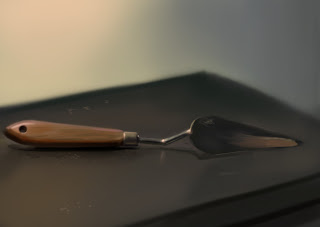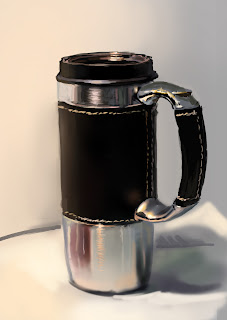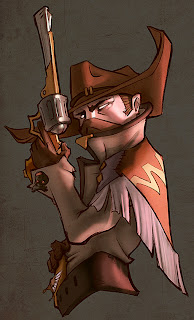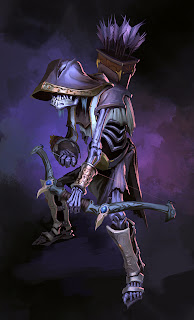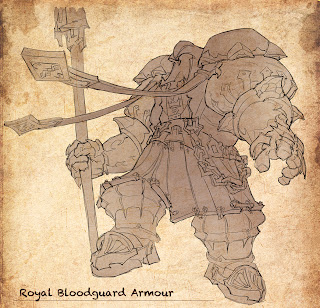Got the FIRE BACK YEAH!!!
Been thinking a lot about form in my still lives. Having less and less time to do them these days... How long can I keep it up?
Also, I'm often on the phone with my girlfriend as I do these, so I wonder how that affects their quality. During the last one she read me Sailor Moon lore from the wiki.
Some thoughts I've collected over the past couple of days:
When you are drawing line art, doesn't matter that much how you arrange your shapes, as long as there is a semblance of going big to small. The eye can be guided with line weight.
Size should dictate the amount of detail you put on an object. If it's big, it's usually important.
I think that ideally every company wants their concept artists to produce the quality of work they would produce for themselves (for fun), but do it for the company and before its deadlines.
If you want to become good, you have to modify your process for painting so that you are rewarded appropriately as you paint. In a way, it's like a video game. It's only fun if you have enough success, otherwise you don't want to play anymore. Since making a detailed illustration or concept takes a long time, there must be points in your process where you look at your work, become proud of your progress and get inspired to continue working. For me, there is always a dip that happens at about 40% when your expectations for the painting are underwhelmed by what it actually looks like as you start to refine the sketch.
There is always a positive and a negative way to react to your situation, so ALWAYS react positively. When you are striving towards a goal, you are only harming yourself by letting negativity get into your brain, even if its only for analysis of your situation.
I started taking 5-minute "motivation breaks." When I feel tired, bored or uncomfortable from sitting in one place for a while, I go into the living room and look outside for a couple of minutes. Then I flex my muscles, yell and do whatever it takes to get myself pumped up to go back to work. It works much better than taking breaks by checking your email.
Instant colour scheme tip #1:
- Take your entire image or area with muddy colours and lower the saturation.
- Go into "Color Balance" and raise or lower any colour you want. Boom.
I still haven't figured out a good way to mix colours digitally, because there is no way to preview the colour you find with RGB sliders other than trial and error. Also, PS eats your saturation when you use opacity to blend your colours, which gets in the way of everything. Maybe I should just permanently use my brush on overlay? Gonna try it on my still life tonight.
When you set out on a big project, it's important to lay down some key elements and main goals at the beginning, so that you don't lose track of them as you are working.
If you are using a soft brush, you are limiting your value range, because your capabilities for contrast are limited. This is why it also makes sense to use a soft brush to begin your paintings. However, as you progress through it, you must use a harder-edged brush for the fine value/colour transitions.
Contrary to the unpopular belief, it IS actually about the brushes. The shapes you make, the hardness /softness of edges, and how the brush puts down the colour are all qualities that are essential in achieving a workflow that makes every stroke count.
The MOST IMPORTANT THING I LEARNED: It doesn't matter how good or bad you are objectively. If you can constantly convince yourself that you're just within reach of greatness, you will become objectively great sooner than you think.
Oh yeah, I also think I'm gonna reveal that project I've been talking about. Check it out!
And some thumbs:
Just sent that off to the blizzard guys I met. Hopefully they'll find these worthy of a crit.
Based on the work you see above, things I need to work on are:
- Scale
- Depth in Z-space by the use of colour, saturation, edges and shape. i.e. more scale.
So I gotta get back to work!









